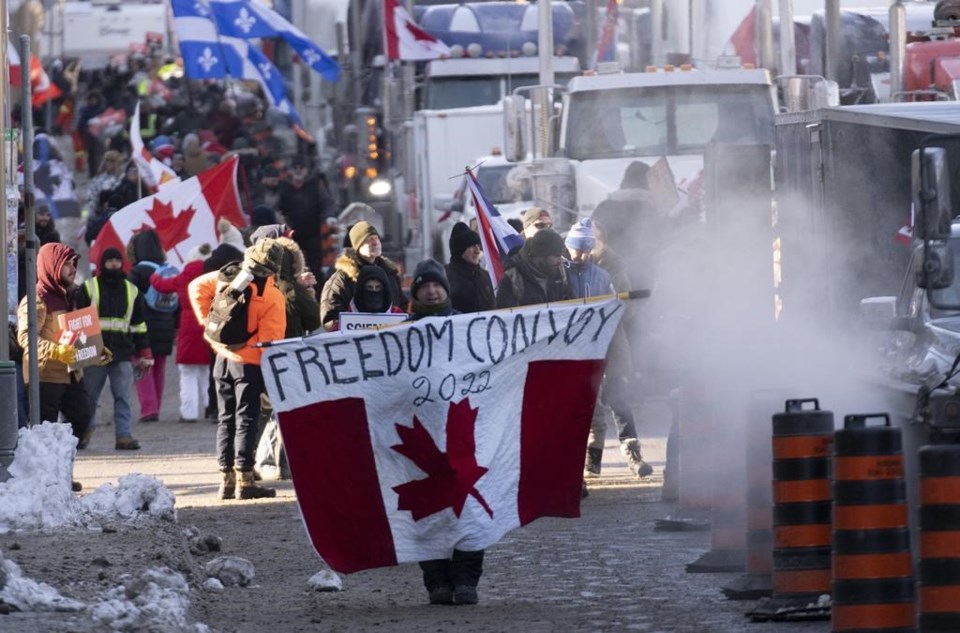EDITOR’S NOTE: This article originally appeared on The Trillium, a new Village Media website devoted exclusively to covering provincial politics at Queen’s Park.
As part of an ongoing effort to reform Ontario’s policing laws, the provincial government recently posted draft regulations that one expert says appear to incorporate lessons from the Emergencies Act inquiry.
The Ministry of the Solicitor General is looking for public and stakeholder feedback on new regulations to update the provincial counterterrorism plan with a more general “major incident response plan,” according to the documents.
While Solicitor General Michael Kerzner's office didn't respond before publication to a request for an explanation of the proposed plan, a Western University professor who specializes in policing said the draft regs appear to reflect certain findings of the inquiry stemming from the 2022 Freedom Convoy protests.
"(The proposals) are out of the public inquiry into the Emergencies Act, and they're to do with deficiencies that were recognized in the report and in the testimony of people that appeared before the commission,” Western Prof. Laura Huey said.
"The major incident response plan is basically about the next time we have a significant event like Ottawa in the convoy protests. What are the protocols that ought to be in place? Whose roles and responsibilities belong to who?” Huey said.
The inquiry by the Public Order Emergency Commission, led by Commissioner Paul Rouleau, was prompted by the federal government's use of the Emergencies Act in response to the occupation of Ottawa and the related protests across Canada. It also examined how provincial governments were involved in responding to the demonstrations.
The Ontario government's proposed replacement of its counterterrorism plan starts by outlining the steps police forces have to take to plan for a major incident, including annual risk assessments, running drills, ensuring there’s enough proper equipment for given situations, and beyond.
It goes on to detail what a local force is responsible for on the ground when something happens, how to properly notify higher authorities and keep them informed, and how to ask for help.
Overall, the proposal is aimed at “standardizing” a police force’s plans for “effective police coordination and communication, while acknowledging that a co-ordinated and effective response to any major incident can involve numerous agencies and departments from all levels of government with overlapping responsibilities and mandates,” the document said.
In the early days of the Freedom Convoy protests, “there was some initial difficulty with mobilizing resources,” Huey said.
“There was some wrangling internally as to who was going to be responsible for dealing with the issue,” between the Ottawa Police, OPP, and RCMP, she added.
“You can’t just pick up the phone and call the RCMP as the Ottawa police chief and think they’re going to mobilize, because in Ottawa they’re (the RCMP) a federal police service. There are rules you have to go through to mobilize them,” she said.
The inquiry's report details numerous instances when police were overwhelmed and the response fell into disarray.
“The influx of Freedom Convoy vehicles and the disruptive behaviour by some protesters threw the (Ottawa Police Service) operational command at the (National Capital Region Command Centre) into a state of dysfunction,” said the February 2023 report by Rouleau, an Ontario Court of Appeal judge.
On Feb. 2, 2022, a few days into the occupation of downtown Ottawa, “the OPP identified that the OPS (Ottawa Police Service’s) lack of internal command, control, and communication was frustrating the OPP’s attempts at providing assistance,” Rouleau's report said.
An OPP superintendent “testified that the OPS response to the Freedom Convoy remained dysfunctional and dangerous. He pointed to the failure to use (police liaison teams) and confusion within the OPS over who had the authority to direct operational planning as reasons why he was reluctant to provide additional OPP resources to the OPS,” added the report that came after a month-and-a-half of high-profile public hearings in Ottawa that were held late last year.
Rouleau's report also detailed times when several different people — from then-Ottawa police chief Peter Sloly to then-Ottawa mayor Jim Watson — requested more help from the provincial and federal governments.
“Now with this new set of proposals, there's a process,” Huey said.
The local force “will have overall responsibility on the ground for something but the OPP will step in and help with coordination of resources and so on,” she said.
The new proposal has the OPP intimately involved with coordination and communication.
During a major incident, the local police force “shall make prompt notifications to the OPP commissioner … and continue to provide updates to maintain situational awareness,” the proposal said.
The OPP commissioner will then notify Ontario's deputy solicitor general of community safety and the provincial security adviser.
“The OPP shall continue to liaise (with the local force) and other entities as needed to provide continuous updates to the” deputy solicitor general and provincial safety adviser. The OPP is also responsible for making “appropriate notifications to the RCMP as required.”
The Ministry of the Solicitor General's draft proposals provide a much clearer set of procedures to follow, Huey said.
It’s not reinventing the wheel, Huey said. Some of it’s just “best practice” that “well-run police services with the right people” were already doing.
“What this does is enshrines it in regulation,” she said. “Hopefully what it’ll do is clarify these roles” and also enhance accountability.



